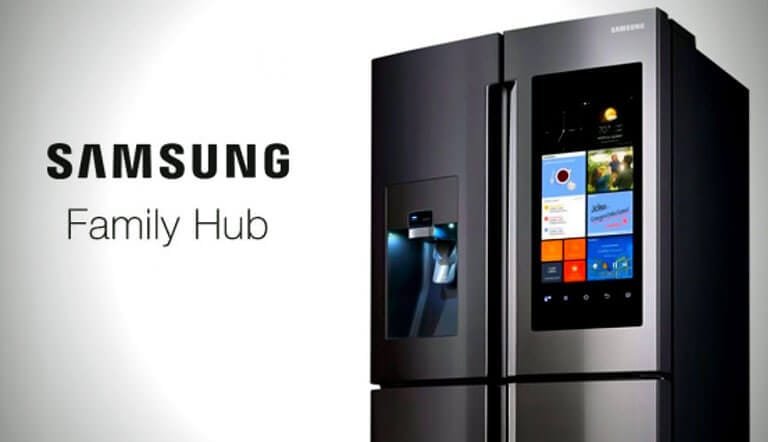Is your Samsung refrigerator not cooling as it should? This can be a frustrating problem, especially when your food starts spoiling.
Understanding why your Samsung refrigerator isn’t cooling can save you time, money, and stress. A refrigerator is an essential appliance in every household. It keeps your food fresh and safe to eat. When it stops cooling, it disrupts daily life.
There are several reasons why your Samsung refrigerator might not be cooling properly. From simple fixes like checking the thermostat to more complex issues like a malfunctioning compressor, identifying the root cause is key. This blog will guide you through common problems and solutions. By the end, you’ll have a better understanding of what’s causing the issue and how to fix it. Let’s dive in and get your fridge cooling again!
Common Causes
Experiencing issues with your Samsung refrigerator not cooling can be frustrating. Understanding the common causes can help you troubleshoot and fix the problem. Let’s dive into some typical reasons why your Samsung refrigerator might not be cooling effectively.
Power Issues
First, check if your refrigerator is properly plugged in. A loose plug can cause the fridge to stop cooling. Ensure that the outlet is working by testing it with another device.
Also, inspect the circuit breaker. Sometimes, a tripped breaker can cut off power to the refrigerator. Reset the breaker if needed.
Thermostat Settings
The thermostat controls the temperature inside the refrigerator. If set too high, it can prevent proper cooling. Adjust the thermostat to a lower setting and wait for a few hours.
If the issue persists, the thermostat might be faulty. Consider consulting the user manual or contacting a technician for further assistance.
Blocked Vents
The vents in your refrigerator allow for air circulation. Blocked vents can disrupt the cooling process. Check if any food items or containers are blocking the vents.
Ensure that the vents are clear to allow proper airflow. Rearrange the items inside your refrigerator if necessary.
By understanding these common causes, you can take simple steps to fix your Samsung refrigerator not cooling issue. Always refer to your user manual for specific guidelines.
Initial Checks
Is your Samsung refrigerator not cooling? Before calling a technician, perform some initial checks. These simple steps could save you time and money.
Power Supply
First, check the power supply. Ensure the refrigerator is plugged in correctly. Confirm the outlet is working by plugging in another device. If the outlet is faulty, use another one. A stable power supply is crucial for the refrigerator to function.
Control Panel Indicators
Look at the control panel indicators. Are any lights blinking or showing error codes? Refer to the user manual to understand these codes. Reset the control panel if necessary. Sometimes, a simple reset can fix cooling issues.
Door Seal
Inspect the door seal. A loose or damaged seal can cause cooling problems. Ensure the seal is tight and free from cracks. Clean the seal regularly to remove any dirt. A clean, tight seal helps maintain the fridge’s temperature.
Temperature Settings
Understanding the temperature settings of your Samsung refrigerator is crucial. Proper settings ensure your food stays fresh and safe. Incorrect settings can lead to cooling issues. Let’s explore the recommended levels, how to adjust settings, and monitoring changes.
Recommended Levels
For optimal performance, set the refrigerator temperature to 37°F (3°C). The freezer should be at 0°F (-18°C). These levels keep food fresh and prevent spoilage. Always refer to your user manual for specific recommendations.
Adjusting Settings
Adjusting the temperature is simple. Locate the control panel inside your refrigerator. Press the fridge or freezer button to change the temperature. Each press usually changes the temperature by 1 degree.
Wait for 24 hours after adjusting. This allows the refrigerator to stabilize. If the cooling issue persists, consider checking other factors such as door seals or airflow.
Monitoring Changes
After adjusting, monitor the temperature. Use a thermometer inside the fridge and freezer. Place it in the middle of the shelves for accurate readings. Check the temperature every few hours. This helps ensure the settings are correct.
If you notice fluctuations, check for obstructions. Ensure vents are clear and the door closes properly. Regular monitoring helps maintain optimal cooling performance.
Cleaning Condenser Coils
A Samsung refrigerator not cooling properly can be quite frustrating. One common cause is dirty condenser coils. These coils play a vital role in the cooling process. They help disperse heat from the refrigerator. When they get dirty, the cooling efficiency drops. This can lead to a warmer fridge. Cleaning the coils can solve this problem. Let’s dive into the details.
Locating Coils
First, you need to find the condenser coils. In most Samsung refrigerators, they are at the back. Some models have them at the bottom. Check your user manual to be sure.
Cleaning Tools
You will need a few simple tools:
- Vacuum with a brush attachment
- Soft brush or coil cleaning brush
- Cloth
Step-by-step Guide
Follow these steps to clean your condenser coils:
- Unplug the refrigerator to ensure safety.
- Move the fridge away from the wall to access the coils.
- Use the vacuum to remove loose dust and debris.
- Gently brush the coils with the soft brush.
- Wipe down the area with a cloth to remove any remaining dirt.
- Move the refrigerator back into place and plug it in.
Now, your coils are clean, and your refrigerator should cool better. Regular maintenance helps keep your appliance running efficiently. Clean the coils every six months for the best results.
Samsung Refrigerator Not Cooling? [Here is the Inspecting Evaporator Fan]

If your Samsung refrigerator is not cooling, the evaporator fan might be the problem. The evaporator fan plays a crucial role in circulating cool air inside the fridge. Without it, the cooling process is disrupted. Let’s dive into how to inspect the evaporator fan properly.
Fan Function
The evaporator fan helps to distribute cold air throughout the refrigerator. It ensures that every part of the fridge maintains a consistent temperature. If the fan stops working, some areas may not get cold enough. This can result in spoiled food and other issues.
Checking For Obstructions
First, unplug your refrigerator to ensure safety. Next, locate the evaporator fan, usually found in the freezer compartment. Check if any items or ice block the fan blades. Obstructions can prevent the fan from spinning freely. Remove any visible debris or ice buildup.
Fan Replacement
If the fan is clear of obstructions but still not working, it may need replacement. Start by removing the fan cover to access the fan. Carefully detach the fan from its housing. Note the wiring connections before disconnecting them. Replace the old fan with a new one. Reconnect the wiring and secure the fan in place.
Defrosting System
The defrosting system in your Samsung refrigerator plays a crucial role. It prevents ice build-up inside the unit. A well-functioning defrosting system ensures optimal cooling performance. Let’s explore the different types of defrosting systems and signs of malfunction.
Manual Defrost
Manual defrost systems require user intervention. You need to turn off the refrigerator. Then, let the ice melt naturally. This process can take several hours. It’s essential to remove all food items before defrosting. Also, place towels to catch the melting ice. Regular manual defrosting prevents ice accumulation. It keeps your refrigerator cooling efficiently.
Automatic Defrost Cycle
Automatic defrost systems are more convenient. They don’t require user intervention. The system periodically heats the cooling coils. This melts any accumulated ice. The water then drains into a pan and evaporates. Automatic defrost cycles run at regular intervals. They ensure the refrigerator stays ice-free. This maintains consistent cooling performance.
Signs Of Malfunction
Sometimes, the defrosting system may malfunction. Watch for signs that indicate a problem. Thick ice build-up inside the freezer. This is a clear sign. Another sign is water leaking inside the refrigerator. If food items are not properly chilled, there may be an issue. Also, if the defrost heater or timer fails, the system won’t work. Address these issues promptly. Ensure your refrigerator cools effectively.
Checking Refrigerant Levels
A Samsung refrigerator not cooling can be frustrating. One common issue is low refrigerant levels. Refrigerant is essential for the cooling process. Without enough refrigerant, your fridge cannot maintain the right temperature. Let’s dive into the steps for checking refrigerant levels.
Symptoms Of Low Refrigerant
Identifying the symptoms of low refrigerant is crucial. Here are some common signs:
- Warm air: The fridge blows warm air instead of cold.
- Frost buildup: Excess frost forms on the evaporator coils.
- Longer cooling cycles: The fridge runs longer to achieve the same cooling.
Professional Assessment
A professional assessment is often necessary. Technicians use specialized tools to check refrigerant levels. They ensure proper handling of refrigerant. It is important to avoid DIY methods, as refrigerant can be hazardous.
Here are the steps a technician may follow:
- Inspect the system for leaks.
- Use a pressure gauge to measure refrigerant levels.
- Evaluate the performance of the compressor.
Recharging Refrigerant
Recharging refrigerant is a delicate process. Only a certified technician should perform this task. Here is what the process entails:
- Recover any remaining refrigerant.
- Repair any detected leaks.
- Recharge the system with the correct amount of refrigerant.
- Test the system to ensure proper cooling.
Keeping refrigerant levels in check ensures your Samsung refrigerator operates efficiently. Regular maintenance can prevent cooling issues.
Professional Help
Sometimes, your Samsung refrigerator may stop cooling. This can be frustrating. If you have tried all DIY fixes and nothing works, it’s time to seek professional help. Expert technicians can diagnose and fix the issue quickly and efficiently. They have the skills and tools to handle complex problems that you might not be able to fix on your own.
When To Call A Technician
Call a technician if your refrigerator isn’t cooling at all. Also, if you hear unusual noises or notice leaks, reach out to a professional. If the temperature inside the fridge fluctuates, it’s a sign of a problem. Do not wait too long to call for help. Delaying repairs can lead to more damage and higher repair costs.
Cost Considerations
The cost of professional repairs can vary. Simple fixes may cost less. Complex issues might be more expensive. On average, repairs can range from $100 to $400. Always get a quote before agreeing to the service. Ensure you understand what the cost covers to avoid surprises later.
Finding Reliable Service
Finding a reliable technician is crucial. Ask for recommendations from friends or family. Read online reviews to check the reputation of the service provider. Ensure the technician is certified and experienced. A reliable technician will offer a warranty on their work. This guarantees that if something goes wrong, they will fix it without extra charges.
Frequently Asked Questions
Why Is My Samsung Refrigerator Not Cooling?
There could be many reasons. Check if the vents are blocked, or the temperature setting is too high.
How Do I Reset My Samsung Fridge?
Unplug the fridge for 5 minutes. Then, plug it back in to reset.
What Temperature Should My Samsung Fridge Be Set At?
The ideal temperature is 37°F for the fridge and 0°F for the freezer.
How Do I Fix A Samsung Refrigerator That Is Not Cooling?
Clean the coils, check the thermostat, and ensure the door seals are tight.
Is There A Recall On Samsung Refrigerators?
Check the Samsung website or contact customer service for the latest recall information.
Conclusion
Fixing a Samsung refrigerator not cooling can be simple. Check the power supply first. Ensure the thermostat is set correctly. Clean the condenser coils regularly. Replace any faulty parts promptly. Regular maintenance helps avoid cooling issues. Seek professional help if problems persist.
A well-functioning refrigerator is essential for food preservation. Keep it in top shape. Follow these tips for a cool and efficient fridge. Enjoy fresh food every day.
